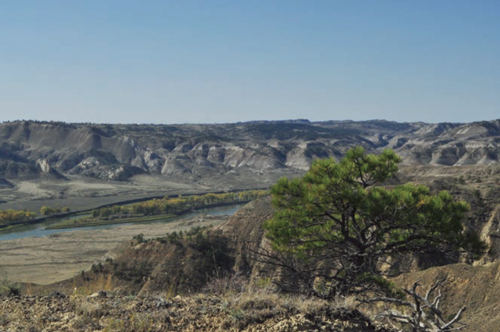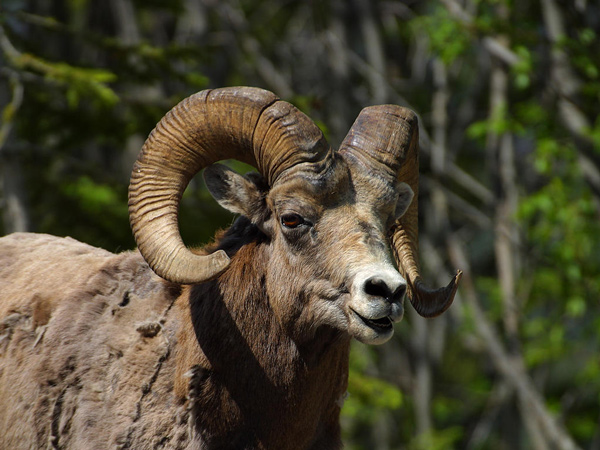The journalists describe a change in geological formations as they enter the Upper Missouri River Breaks National Monument. Drouillard kills the expedition’s first bighorn sheep, and Lewis describes the animal. In Washington City, President Thomas Jefferson discusses the Freeman-Custis Expedition.
First ‘Ibex’ or Bighorn Sheep
by Yellowstone Public Radio[1]Originally aired weekdays by Yellowstone Public Radio during the Bicentennial observance of 2003-2006. Narrated by Hal Hansen. Scripts by Whit Hansen and Ed Jacobson. Produced by Leni Holliman. © … Continue reading
Judith River Formation
The Country on either hand is high broken and rockey; the rock is either soft brown sand stone covered with a thin strata of limestone, or a hard black rugged grannite, both usually in horizontal stratas and the Sandy rock overlaying the other.—
—Meriwether Lewis
Detached Mountains
In my walk of this day I saw mountts. on either side of the river at no great distance, those mountains appeared to be detached, and not ranges as laid down by the Minetarrees, I also think I saw a range of high mounts. at a great distance to the S S W. but am not certain as the horozon was not clear enough to view it with Certainty.
—William Clark
The Bighorn Sheep
The head and horns of the male [bighorn sheep] which Drewyer killed weighed 27 lbs. it was somewhat larger than the male of the common deer, the boddy reather thicker deeper and not so long in proportion to it’s hight as the common deer; the head and horns are remakably large compared with the other part of the animal
—Meriwether Lewis
Buffalo Become Scarce
buffalow are now scarce and I begin to fear our harvest of white puddings are at an end.
—Meriwether Lewis
Weather Diary
State of thermometer at rise
Weather Wind at rise
State of thermometer at 4 P. M. Weather Wind at 4 P. M. State of the river 46 [above 0] fair S W 82 [above 0] fair S. W. raised 2 in. saw the kingbird, or bee martin; the grouse disappear. Killed three of the bighorned antelopes.
—Meriwether Lewis[2]To assist the reader, the editor of this web page has omitted the date column, merged the “State of the river” columns, and spelled out some abbreviations.
The Freeman-Custis Expedition
Washington May 25. 1805.
Dear Sir [William Dunbar]
. . . . .
with the dangers from the seceding Osages residing on the [Arkansas] river have determined me to confine the ensuing mission to the ascent of the Red river to it’s source, & to descend the same river again
. . . . .
Dr. Hunter does not propose to take a part in this mission, and we suppose that mr George Davis, a deputy of mr Briggs will be the fittest person to take the direction of the expedition and Colo. Freeman as an assistant, & successor in case of accident to the principal.
. . . . .
Th: Jefferson[3]Founders Online, National Archives, founders.archives.gov/documents/Jefferson/99-01-02-1777 [from The Papers of Thomas Jefferson.]
Notes
| ↑1 | Originally aired weekdays by Yellowstone Public Radio during the Bicentennial observance of 2003-2006. Narrated by Hal Hansen. Scripts by Whit Hansen and Ed Jacobson. Produced by Leni Holliman. © 2003 by Yellowstone Public Radio. |
|---|---|
| ↑2 | To assist the reader, the editor of this web page has omitted the date column, merged the “State of the river” columns, and spelled out some abbreviations. |
| ↑3 | Founders Online, National Archives, founders.archives.gov/documents/Jefferson/99-01-02-1777 [from The Papers of Thomas Jefferson.] |


